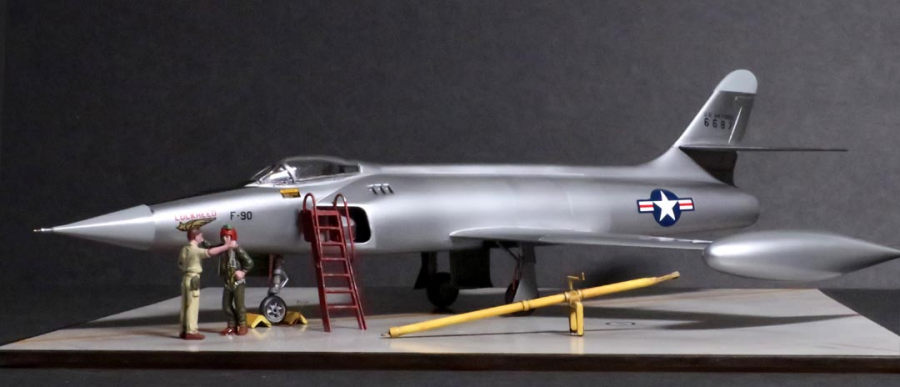
Aurora 1/48 XF-90
| KIT #: | |
| PRICE: | |
| DECALS: | |
| REVIEWER: | Chuck Horner |
| NOTES: |

| HISTORY |
A/C History:
2nd Lockheed fighter design after P-80
1st flight – June 1, 1949
under powered. J-34 never produced advertised power
Designed around Westinghouse J-34 (in development).
Unsafe to use Muroc (laster Edwards) paved runways
10-mile dry lake bed and JATO
But could exceed Mach 1 in slight dive.
 Afterburners added to 2nd prototype
Afterburners added to 2nd prototype
Some help but used too much fuel and reduced range.
Kelly Johnson (Lockheed chief designer) recommends cancel
To meet design requirements - redesign with larger engine, but add 12-18 mons, and obsolete!
Air Force cancels August 1951
1st prototype scraped; 2d to A-bomb tests
AT 2200-foot mark to test damage by bomb
Minor damage after 2 blasts
Wreaked on 3rd blast – move to desert.
Recovered by AF Mus in late 1990’s
Influences:
Publicized as “next great Air Force Fighter” by Lockheed, Westinghouse and even Air Force.
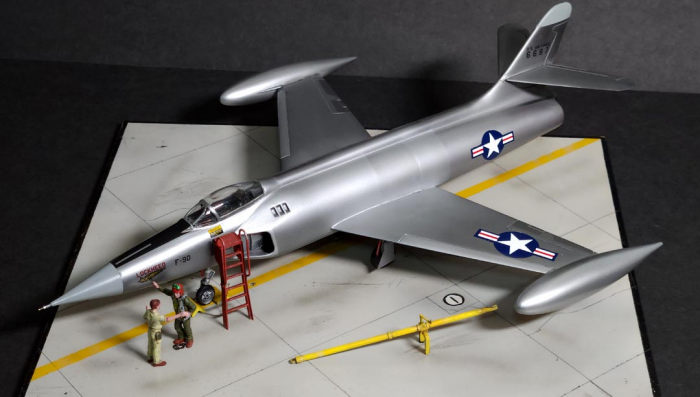 To 1950 public – the ultimate futuristic design.
To 1950 public – the ultimate futuristic design.
Blackhawk comics – 1940-1972 - Private Air Force
fighting enemies, villains and monsters
F-90 1950- 1964
Detroit car stylings cues
General sleekness, Swept back fins, dual exhausts and intakes, etc
1956 Oldsmobile hood ornament
Plastic Models
1952 –Hawk models – 1st all styrene plastic model in US
1952 – Aurora copies
| THE KIT |
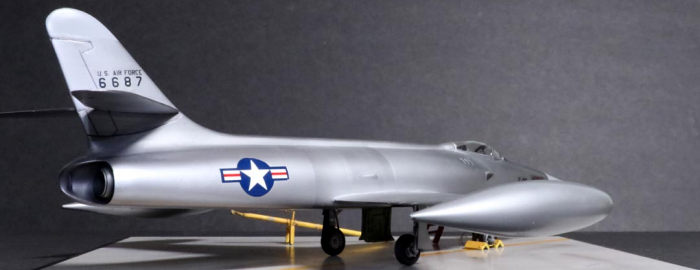 One never knows where a new project will lead you. The
XF-90, although a somewhat obscure design and a short history, spread its
influence across many areas.
One never knows where a new project will lead you. The
XF-90, although a somewhat obscure design and a short history, spread its
influence across many areas.
As an afterthought, I included the XF-90 title in an order of Ginter Publications. I knew of the airplane and even built a kit as a kid, but didn’t know the details.
The Model
Original 1955 boxing with bogus landing gear and rockets
Apologies to die-hard kit collectors for ruining a perfectly good collectable by --- building it.
| CONSTRUCTION |
Sanding off raised makings
Cockpit – old Squadron Resin T-33
Landing gear wells, gear, gear doors
Main gear doors – Mono F-100D
Blocked intake
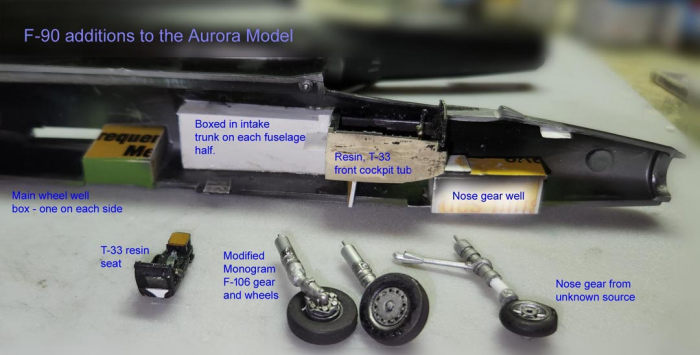
Adding exhaust & weight to front
Alclad silver – no scribing. Tamiya Laq. shading
Scanned 70-yr old decals to get Lockh. Logo
The Base
Plexiglass scrap -- painted – for gen use
Figures:
Pilot – Rev/Mono F-84E
Ground crew – Mono B-25
Equip- Modify from 1980’s ESCI ground equip kit
Tow Vehicle – 1948 or 49 Chevy Suburban
P-80A-1 “BLUNDER-BUS”
1st Lt. Henry King
29th FS, 412 FG, Project Comet – May, 1946
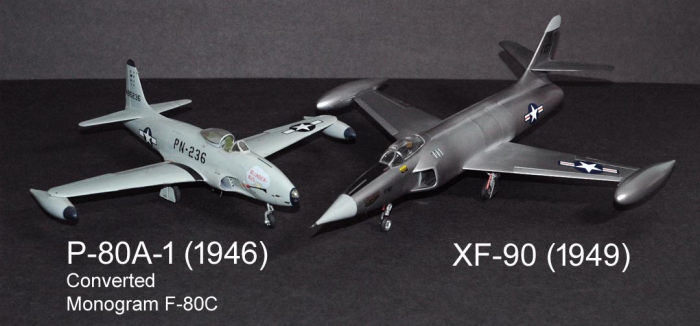 While flying between Project Comet stops of Chanute
Field, Ill. and Tinker Filed, OK, King and flight leader Maj. Sam Sears, became
lost and made an emergency landing on a very small private strip in Missouri.
Both aircraft over-ran the short runway, Sear’s being damaged but King’s came to
a safe stop in the grass beyond.
While flying between Project Comet stops of Chanute
Field, Ill. and Tinker Filed, OK, King and flight leader Maj. Sam Sears, became
lost and made an emergency landing on a very small private strip in Missouri.
Both aircraft over-ran the short runway, Sear’s being damaged but King’s came to
a safe stop in the grass beyond.
Fuel and a support crew were sent from Scott Field, ILL. “Blunder-Bus” was rolled out onto Highway 61 and took off from that stretch of road. Sear’s plane was disassembled and trucked to Scott Field for repairs.
28 April 2023
Copyright ModelingMadness.com. All rights reserved. No reproduction in part or in whole without express permission.
If you would like your product reviewed fairly and fairly quickly, please contact the editor or see other details in the Note to Contributors.